While most people don’t think of winter as the ideal time for cycling, it can provide some of the best riding of the year. It does take some extra preparation and the right gear, so here are a few tips for cycling in winter.
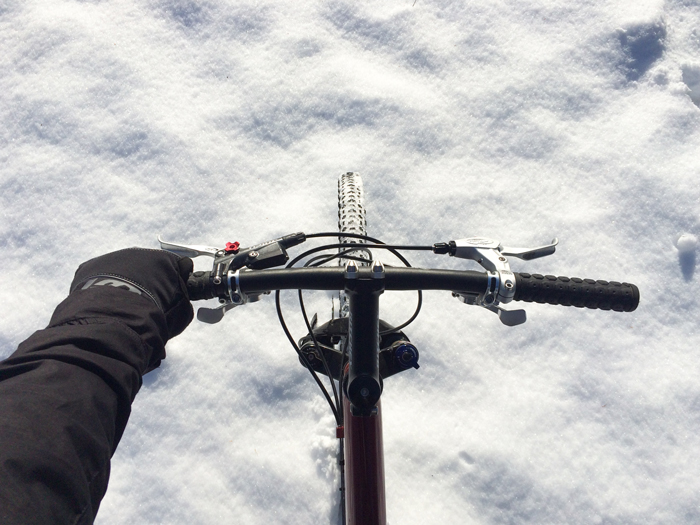
Clothing
The obvious consideration when cycling in winter is staying warm. Layers are best in cold weather and a few layers of the right material shouldn’t be too bulky, leaving you with full range of motion for cycling.
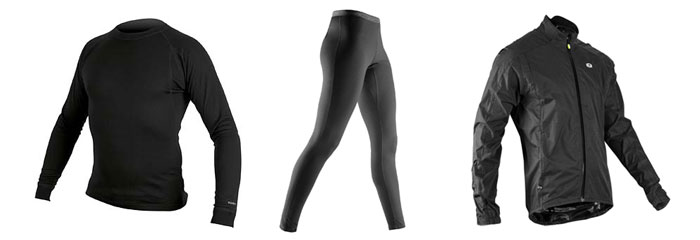
Start with a relatively thin base layer that will hug tight to your skin. It’s goal is to keep you dry, and synthetic materials or merino wool are the best for this. Avoid cotton which tends to absorb sweat and hold it next to your skin. Next is an insulation layer. This should be a bit looser to trap air near your body. This could be a long sleeve jersey, or a thicker fleece depending on how cold it is. Finally, you want a wind breaking layer on the outside.
Accessories
Luckily cycling is a very aerobic activity and your body generates a lot of heat while doing it. The difficult bits to keep warm are the fingers, toes, and any exposed skin.
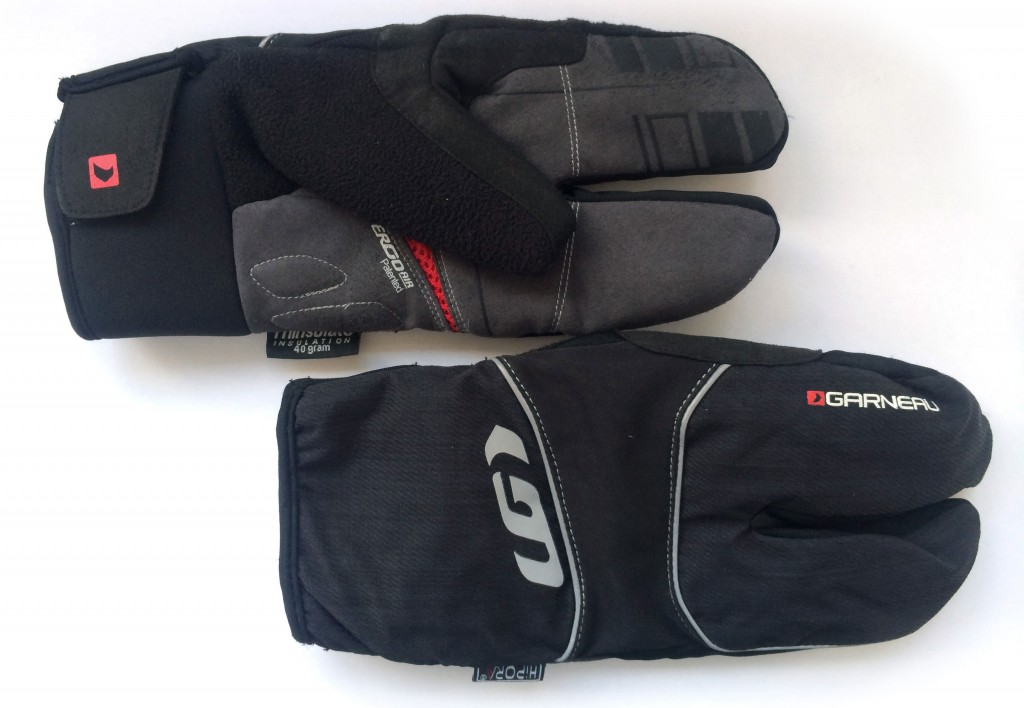
A good pair of gloves are crucial, and on the coldest days I recommend a lobster claw style which keeps 2 fingers together for warmth. Unlike mittens, the design still allows you to easily pull your brake levers.

Too keep your feet warm, wool socks are best. If you use platform pedals, a normal winter boot is an option. If you ride in cycling shoes, there are a variety of shoe covers available that block the wind and provide additional insulation.They look like large socks that go over the shoe, with an opening on the bottom for your pedal cleat. Smaller toe covers are an option as well, but they provide less protection and are generally meant for those cold but not freezing rides.
Head/Face/Neck
There’s a lot of exposed skin in this area, and you’ll need to cover it up if you plan to have a pleasant ride in cold weather.
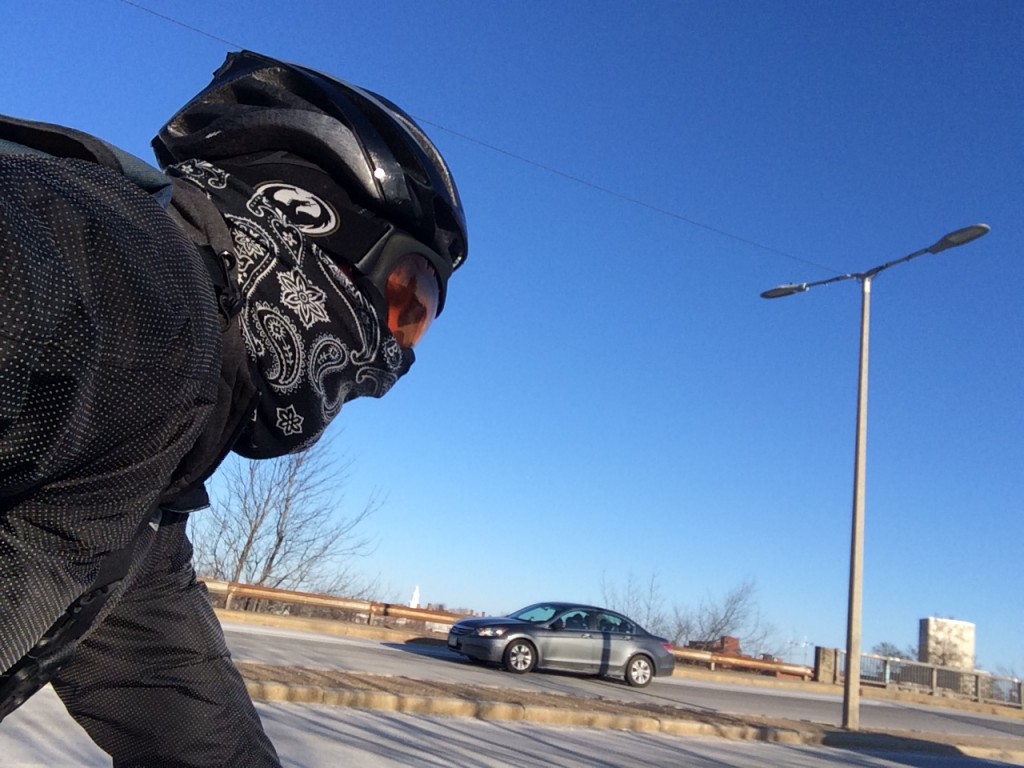
A thin fleece hat can usually fit nicely under a helmet and provide coverage to the ears as well. For the neck I recommend a gaitor which can also be pulled up to cover the face and nose. On the coldest of days, or if there is precipitation, goggles can make all the difference in the world. Riding through very cold air can make your eyes water and reduce visibility. Ski goggles are perfect to prevent this.
Tires
Cold temperatures alone shouldn’t affect your bike but if you’re dealing with ice and snow, the proper tire can make the difference between keeping traction and going rubber side up. While slick tires are the most efficient on smooth pavement, they’re less than ideal when winter hits. A tire with tread depth will certainly help with snow, and if you’re regularly dealing with ice, nothing beats metal studded tires. They’re an investment but they usually last several years since they’re only needed for a few months every season.
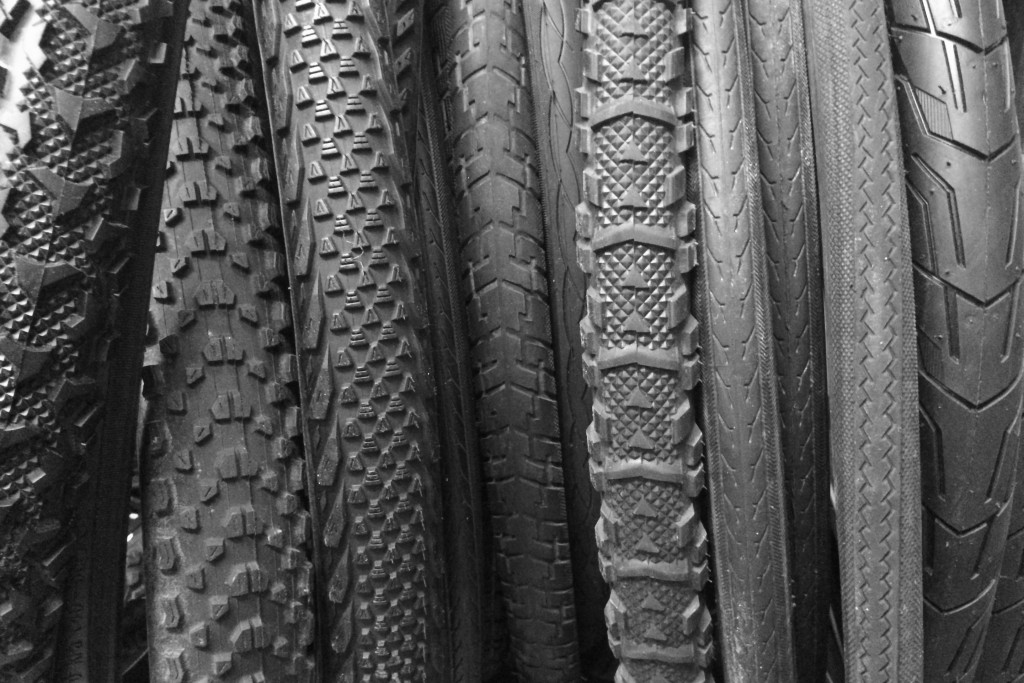
If you’re riding on road and there’s wet or slushy snow, a narrower tire can cut through it better and maintain contact with the pavement. If you’re off road or in deep fluffy snow, you’ll want a wide tire to roll over the snow with very deep treads to dig in and create traction.
A Few Things to Remember
- Hydrate. When you’re cold and not sweating as much as you would in warm weather, it’s easy to forget to hydrate. Be sure to bring water on your rides even in winter.
- Keep your bike clean and lubricated. Moisture, road salt, and dirt are abundant on roadways in winter and they wreak havoc on bike parts. Be sure to regularly clean and lube.
- Light it up. It gets dark early in winter so don’t forget your bike lights. If you’re commuting regularly in the cold, carry an extra set of batteries or charge your lights more often. Cold weather can affect electronics and battery life.
- Have fun. Remember running around outside on those snowy days as a kid? Sledding until sunset then coming in for hot cocoa? Winter cycling is like that, but even more fun. Have the cocoa ready.
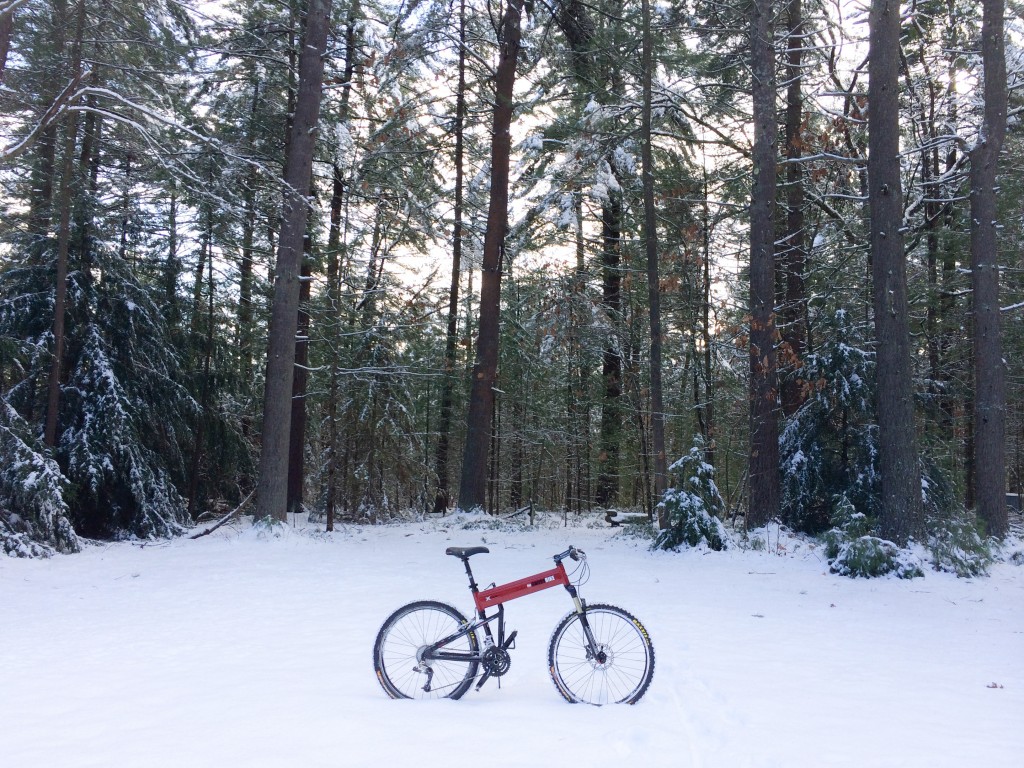


Nice blog. It’s time to step up my winter cycling. I’ve got a 2013 FIT that I love, but don’t ride much in the winter. Time to change that! Thanks.
Glad we could inspire you Stephen! Dress properly and you’ll have a lot of fun out there. If there’s snow in your area, I might recommend a knobbier tire than the stock FIT tire.
We shouldn’t let the wind, rain and cold that winter brings put as off our bike training schedule. The modern cycle clothing are perhaps the best solution to stay warm regardless of the weather outside. Nowadays, they’re quickly gaining popularity among astute cyclists.
Just about to head back into Japan on my old Paratrooper for a late winter/early spring tour via the Sea of Japan side. It is renowned for the occasional blizzard or two, hope it is just cold winds , no rain maybe sleet. Will keep you posted. Good article , now to work out how to keep boots dry for 8-10 hour days on the road.
Is there anything to do to avoid rust, especially in the chassis, because of salt spread on the streets?
I know that chain and transmission will be lost anyway, but it’s to be changed frequently, and it is quite easy and cheap!
Most of the parts on a Montague are either Aluminum (frame, wheels, cranks) or stainless steel (spokes and spoke nipples), so they won’t rust regardless. There are a few small bits like spacers in the frame joint or bolts here and there that are steel. It definitely helps to put a few drops of chain lube on those parts to prevent corrosion. They are replaceable though!